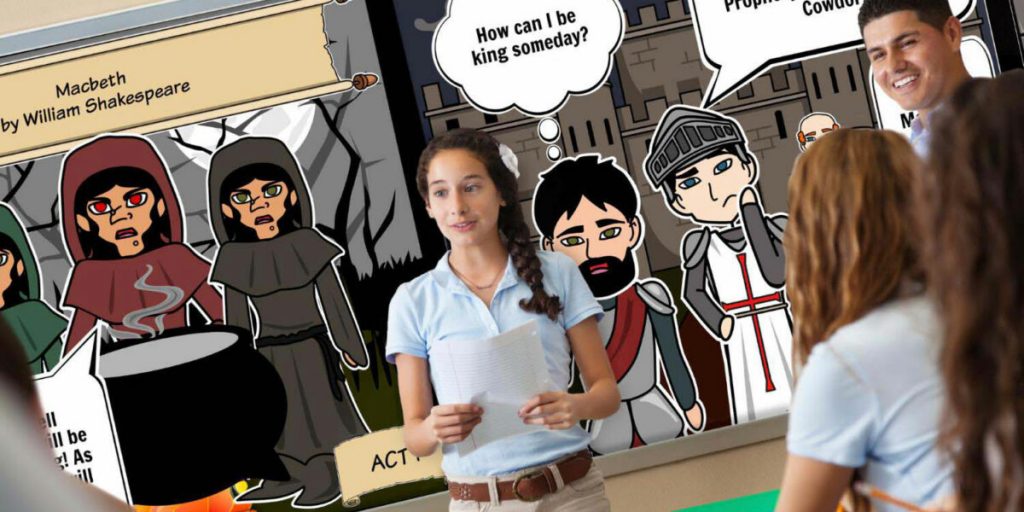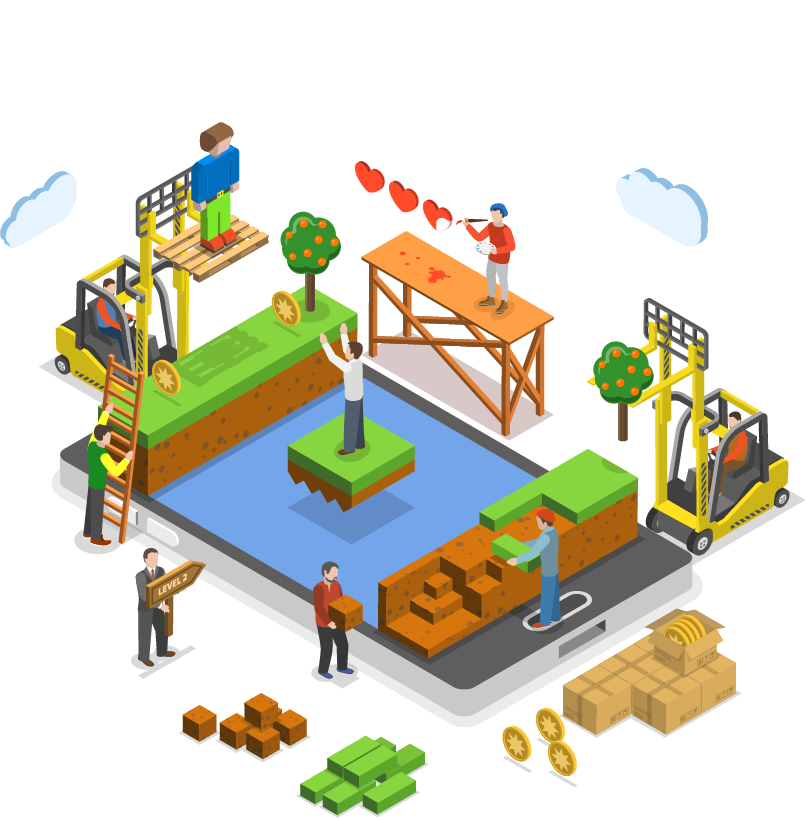Storytelling and narrative in games
The terms “storytelling” and “narrative” in video games relate to the techniques and approaches utilized to tell a story in the game’s setting. This includes the story’s plot, characters, setting, and player presentation.

Storytelling: Storytelling involves revealing a story’s images and elements through words and actions while encouraging the listener’s imagination. It is an interactive way to involve a two-way interaction between a storyteller and listeners. It uses spoken or manual language; furthermore, it can show some physical movements, such as body movements. Storytelling refers to the creation of stories that usually revolve around a plot. Characters, events, and places are often brought together within a context, creating the basic elements of a story.
Narrative: Narrative refers to an overall narrative in which events, characters, and places can be found within this structure. Despite storytelling, a narrative is not limited. We can use a topic, an experience, or an idea. The narrative provides not only a story but also the revelation of a thought process or an event. There are four types of narratives.
- Linear narrative: It prevents the player from going backward, moving forward, or changing the plot. Instead, it follows a relatively specific order of events.
- The String of Pearls narrative: The gameplay has a general linear progression but can be influenced by the player.
- A branching narrative: gives the player complete influence over how the story develops and ends.
- The amusement park narrative: Through interaction, the player can direct the plot; however, instead of completing missions or additional tasks, the player discovers these branches by talking with the NPC related to that story.
Game mechanics and educational outcome
Game mechanics are part of the formal element of games. They are made up of guidelines and protocols that direct the player throughout gameplay. The mechanics of the game also give players a structure for reacting to the actions of other players.
How games are designed affects how students learn in various settings. When properly included in educational games, these mechanics can improve learning outcomes and contribute to achieving learning objectives.
Game mechanics encompass a diverse set of rules, systems, and interactions that define how a game operates. In educational settings, these mechanics play a pivotal role in shaping students’ learning experiences.

Reward systems
Scoring points in educational games function as a measurable indicator of progress, offering instant gratification and reinforcing positive behaviors. As students achieve higher scores, they experience a sense of achievement, boosting their confidence and encouraging them to tackle more challenging tasks. Similarly, unlocking levels signifies advancement and mastery, signaling to students that they are progressing through their learning journey. This sense of progression can be highly motivating, inspiring learners to persist in their efforts to reach higher levels or more complex challenges.
Additionally, earning badges acts as visible recognition of accomplishments, providing a tangible representation of skills mastered or goals achieved. This tangible reward system not only validates their efforts but also incentivizes further engagement as students strive to collect more badges, reinforcing their motivation to continue learning.
Ultimately, these mechanics create a cycle of engagement, persistence, and accomplishment, fostering a positive learning experience within educational games.
Reward systems within educational games are multifaceted, leveraging various mechanisms to engage and motivate learners:
- Immediate Feedback: Instantaneous feedback for correct actions or answers reinforces learning. This immediacy allows students to understand the consequences of their choices, promoting a deeper understanding of concepts.
- Positive Reinforcement: Rewards, such as points, virtual currency, or virtual goods, serve as positive reinforcements for desired behaviors or accomplishments. These rewards validate students’ efforts, boosting their confidence and intrinsic motivation to continue learning.
- Gamification Elements: Elements like leaderboards, achievements, or rankings add a competitive aspect, encouraging healthy competition among students. Leaderboards, for instance, fuel motivation as learners strive to be at the top, promoting sustained engagement.
By weaving these diverse reward systems into educational games, designers create an environment that not only engages and motivates students but also nurtures a positive attitude towards learning. These systems effectively leverage psychological principles to enhance the learning experience and promote ongoing engagement with educational content.

Challenges and Levels
Challenges
Serious games have advantages, but there are drawbacks as well that must be taken into consideration. These include the cost and accessibility of creating and deploying serious games, particularly in environments with limited resources, as well as the efficiency and quality of serious games. Support from policymakers, teachers, students, and parents is needed for the integration and adoption of serious games in formal and informal learning environments.

Levels
Levels stand for various stages or challenges that players must face. Every level has been carefully developed to
complement the game’s learning objectives. Players come across scenarios that are more challenging, new concepts, or levels of complexity as they go through the game. The levels provide an organized framework for effectively and engagingly delivering instructional content. They can provide a steady and scaffolded learning experience, give gamers a sense of accomplishment, and inspire them to keep going. Creating a learning environment that is both immersive and impactful requires striking a balance between teaching and enjoyment.

The levels provide an organized framework for effectively and engagingly delivering instructional content. They can provide a steady and scaffolded learning experience, give gamers a sense of accomplishment, and inspire them to keep going. Creating a learning environment that is both immersive and impactful requires striking a balance between teaching and enjoyment.
Levels often offer a sense of achievement upon completion, triggering a sense of progress and accomplishment. This sense of accomplishment acts as a powerful motivator, encouraging players to persist through the game, conquer more challenges, and solidify their learning.
Each level may also introduce new mechanics, concepts, or scenarios that build upon previous knowledge, reinforcing understanding and promoting skill mastery. By progressively layering new information or skills, levels facilitate a scaffolded learning experience, allowing players to continually expand their knowledge base and abilities.
- Progressive Challenges: Educational games often feature a series of progressively challenging tasks or puzzles. Starting with simpler challenges and gradually increasing in complexity, these tasks scaffold learning, allowing students to build upon their existing knowledge and skills.
- Skill Development: Each level typically focuses on specific learning objectives or skills. As students progress through levels, they encounter new content or more intricate problems, fostering skill development and deepening understanding.
- Adaptive Difficulty: Games can dynamically adjust difficulty levels based on the player’s performance. Adaptive difficulty ensures that challenges remain engaging and neither too easy nor overly frustrating, optimizing the learning curve for individual students.
By utilizing challenges and levels effectively, educational games structure learning experiences in a way that promotes skill acquisition, engagement, and progression. These elements not only provide a framework for learning but also offer a sense of accomplishment, fostering motivation and sustained interest in the educational content.
Within the overarching structure of a game, levels often intertwine with an immersive narrative or thematic context. This narrative integration adds depth and context to the challenges, making the learning experience more engaging and relatable. Students not only tackle challenges but also progress through a story, creating a more memorable and compelling learning journey.
Collectively, challenges and levels create a comprehensive and engaging learning environment within educational games. They offer a structured yet adaptable approach that supports skill acquisition, knowledge retention, and critical thinking, fostering a positive and enriching learning experience for students.
Real-time Feedback
The purpose of feedback in serious games and simulations is to instruct students on how to enhance their performance, motivation, or learning objectives by utilizing a variety of techniques to inform them of the accuracy of their answers. Methods of providing feedback vary by the type of feedback provided when it is given following a response, how the material is delivered, and the ability to adjust for the unique needs of each student.
The timing of feedback delivery is critical. Real-time feedback, provided promptly after a student’s response or action, allows for an instant understanding of the correctness or effectiveness of their choices. This immediate response helps students to recognize errors, correct misunderstandings, and reinforce correct strategies in the moment.
The nature of feedback delivery is equally significant. Techniques such as informative messages, visual cues, or interactive elements within the game interface deliver feedback in ways that resonate with different learners. Visual learners might benefit from graphical representations or color-coded indicators, while auditory learners may find spoken or auditory cues more effective.
Real-time feedback in serious games and simulations is a dynamic and multifaceted tool that offers timely, tailored, and informative guidance to students. Its adaptability, immediacy, and instructional nature contribute significantly to enhancing performance, motivation, and the attainment of learning objectives in an engaging and effective learning environment.
The adaptability of real-time feedback is a cornerstone of its effectiveness. It can be tailored to suit various learning styles and individual needs, ensuring that each student receives feedback in a format that resonates best with their preferences. Visual cues, auditory prompts, or interactive messages can be employed to cater to diverse learning modalities, optimizing the impact of the feedback.

The immediacy of real-time feedback plays a pivotal role in enhancing the learning process. By providing immediate information following a student’s action or response, it bridges the gap between cause and effect, allowing learners to quickly understand the consequences of their choices. This instant insight fosters a more profound comprehension of concepts and facilitates on-the-spot corrections, promoting a deeper level of engagement and understanding.
Real-time feedback in educational settings, especially within serious games and simulations, is a valuable mechanism that provides immediate information to learners based on their actions or responses. Unlike traditional feedback methods, real-time feedback offers timely insights during the learning process, fostering continuous improvement and engagement. The purpose of real-time feedback is multifaceted.
- Performance Adjustment: Real-time feedback informs students about the accuracy and effectiveness of their actions or responses in the moment. This allows them to make immediate adjustments, reinforcing correct behaviors or correcting misconceptions promptly.
- Motivation Enhancement: Immediate feedback can serve as a motivational tool by acknowledging correct responses instantly. Positive reinforcement through real-time feedback helps boost learners’ confidence, encourages them to stay engaged, and reinforces a sense of accomplishment.
- Learning Objectives Alignment: The primary goal of real-time feedback is to align with specific learning objectives. By providing information about the correctness of answers or the efficacy of strategies, real-time feedback ensures that learners stay on track with their educational goals.
Real-time feedback is a powerful educational tool that leverages immediateness and adaptability to enhance the learning experience. By providing instant guidance, acknowledging achievements, and supporting individualized learning approaches, real-time feedback contributes significantly to student engagement, motivation, and the overall effectiveness of educational activities.
Beyond its instructional role, real-time feedback acknowledges accomplishments and progress. By recognizing successes promptly, it reinforces positive behaviors and achievements, fostering motivation and a sense of achievement that propels continued engagement and perseverance.

Continue to read on: